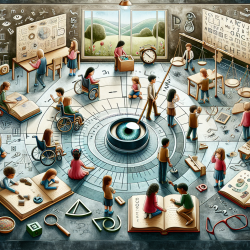The findings reveal that children with cochlear implants generally perform significantly lower than their hearing peers in certain morphosyntactic structure categories. Notably, the study identified two distinct performance profiles among the participants: a small group of children who performed within or above normal limits, and a majority who performed below the normal threshold.
Key Findings
- Children with cochlear implants showed significantly lower performance in categories such as future tense, gender, and reflexive pronouns.
- There was variability in performance within categories like number, possessive, and prepositions, with some items being significantly more challenging than others.
- Performance on items involving complex syntactic structures, such as passive sentences and conditional phrases, was notably lower for children with cochlear implants.
Implications for Practitioners
For speech-language pathologists working with children who have cochlear implants, these findings underscore the importance of targeted interventions. Here are some practical steps to enhance outcomes:
- Customized Assessment: Regularly assess receptive morphosyntax using tools like the Test for Auditory Comprehension of Language (TACL-R) to identify specific areas of difficulty.
- Focused Intervention: Develop intervention plans that target identified weaknesses, particularly in the areas of future tense, gender, and reflexive pronouns.
- Parent Involvement: Engage parents in the intervention process to reinforce language skills at home. Provide them with strategies to support their child's language development.
- Longitudinal Tracking: Monitor progress over time to adjust interventions as needed and ensure that children continue to develop their morphosyntactic skills.
Encouraging Further Research
While this study provides valuable insights, further research is needed to understand the full scope of morphosyntactic development in children with cochlear implants. Practitioners are encouraged to contribute to this body of knowledge by conducting their own studies and sharing their findings with the wider community.
To read the original research paper, please follow this link: Morphosyntaxe rceptive denfants de 5 8 ans porteurs dun implant cochlaire.










